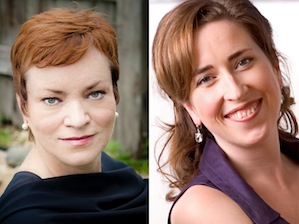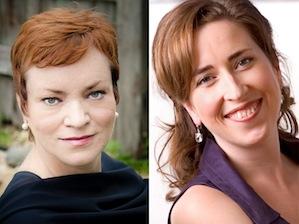
David Tayler and Hanneke van Proosdij’s early-music ensemble Voices of Music has certainly attracted a number of fine vocal soloists this season, and Saturday’s concert at St. Marks Church in San Francisco was no exception. Soloists Dominique Labelle and Meg Bragle are first-rate singers with international careers, and Labelle, especially, offered a dazzling display of vocal mastery and ease found in few singers. Voices of Music is not a stuffy, big-budget institution, and the informal and welcoming atmosphere of the concert provided for a most satisfying evening of works by Vivaldi, Pergolesi, and Allessandro Scarlatti.
I will not dwell on the performances at length, since Voices of Music regularly records its concerts and posts clips on YouTube, where they have a substantial following. This probably contributes to the ensemble’s ability to attract good soloists, but Labelle and Bragle also have appeared with Philharmonia Baroque Orchestra (which is a big-budget institution), of which all of VOM’s players, including Tayler and van Proosdij, are members. This sort of musician self-selection is a sure route to quality musicianship.
Labelle is exceptional among early-music sopranos in that she manages to fill the concert hall with a naturally beautiful tone while maintaining a warm richness. I have the impression that the difficult coloratura runs in Vivaldi’s solo motet In turbato mare irato come so naturally to Labelle that even she would not be able to describe how she accomplishes them. The Voices of Music strings followed her lead in producing a rich, round tone through this multitextured composition (unusual in Vivaldi). It has been argued that such works are inappropriate as church music, though nothing in Labelle’s vocalism indicated she was showing off. She is simply that good, and cannot help it.
Labelle is exceptional among early-music sopranos in that she manages to fill the concert hall with a naturally beautiful tone.
Mezzo-soprano Meg Bragle’s voice is of an entirely different character. Like Labelle, she produces an appropriate tone while avoiding a stereotypical early-music sound, but to my ears, she has had to learn how to make her voice find its way around thorny passages and fill a room. This she accomplished while providing an attractive tone and vivid presence. Nobody envied Bragle’s place in the program, following up on Labelle’s Vivaldi with a Scarlatti motet, Totus amore languens. Bragle had to force her voice in low passages, sometime reducing it to a mousy nasality recalling mezzo-soprano Marilyn Horne. When the music simplified, as in a recitative and slow arioso at the center of the motet, Bragle’s voice took on a more plaintive and attractive tone. Hers is a voice that probably records well and that I suspect is especially suited to 17th-century music.
The performance was as strong as could be expected.
The concert’s centerpiece was the famous Pergolesi Stabat Mater, performed in a new edition made for this concert by David Tayler. I could hear a few differences in the piece, such as a remarkable “sotto voce” at the end of the opening movement, and I suspect some other touch-ups may work their way to the surface through repeated performances. In spite of its popularity, this is not my favorite Pergolesi work, seeming to me to be far too segmented, with several movements taking on a character completely unrelated to the text — like many Janet Jackson music videos. The performance was as strong as could be expected, and I could not have asked to hear better singing in the work’s most intimate penultimate movement. Bragle consistently underbalanced Labelle in the duet passages. This can easily be touched up by an audio engineer, but it does serve as a reminder that recordings are not always representative of live performances.

